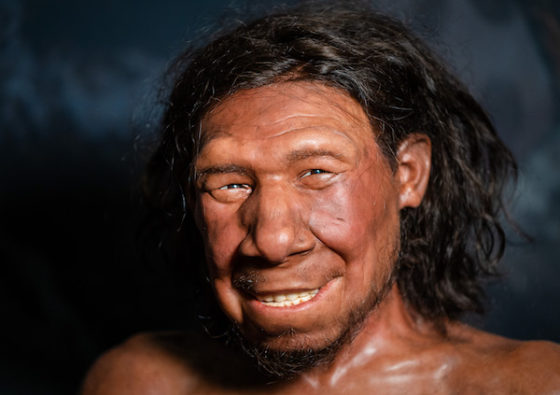Dutch Neanderthal dubbed Krijn has been given jolly grin


The first Dutch Neanderthal, part of whose skull was found on a Zeeland beach 20 years ago, has finally been given a face.
The piece of bone, a fossilised brow ridge, had been sucked from the seabed by a shell collecting machine and deposited on the beach where it was discovered by amateur paleantologist Luc Anthonis in 2009.
The Leiden museum of antiquities was given the skull and had a reconstruction made by Dutch ‘paleo artists’ Alfons and Adrie Kennis based on scientific research. This determined the bone had belonged to a stocky young man who had lump over one eye caused by a small tumour.
The fossil is between 50,000 and 70,000 years old. Krijn, as the Neanderthal man has been dubbed, lived in an area called Doggerland, the prehistoric land link which once connected the low countries and Britain.
A million people are thought to have lived in Doggerland until climate changes flooded the last of the dry land for good around 5800 BC, creating a paleontological treasure trove beneath the waves.
The reconstruction and the fossil are part of the museum’s current exhibition about Doggerland (until October 31).
Thank you for donating to DutchNews.nl.
We could not provide the Dutch News service, and keep it free of charge, without the generous support of our readers. Your donations allow us to report on issues you tell us matter, and provide you with a summary of the most important Dutch news each day.
Make a donation